Photo



August 22nd 1485: King Richard III dies
On this day in 1485, King Richard III of England died during the Battle of Bosworth Field, making him the last English monarch to die in battle. Before ascending to the throne, Richard served as protector of the realm for his nephew, the 12 year old King Edward V. Supposedly to protect him before his coronation, Richard had the young king and his brother lodged in the royal palace of the Tower of London. However, Edward’s claim to the throne was declared invalid and Richard claimed the throne for himself. Soon after Richard’s coronation in July 1483, ‘the Princes in the Tower’ mysteriously disappeared, leading many to believe Richard had them killed to consolidate his claim to the throne. Richard’s reign, and indeed much of that of his predecessors, was dominated by the Wars of the Roses. These wars for the throne were fought during the mid to late fifteenth century between the houses of Lancaster and York, rival factions of the royal House of Plantagenet. Richard III was a Yorkist and contributed to many of his house’s early victories in the conflict, helping ensure his brother and then his nephew’s reign. However, Richard III was destined to become the last king of both the House of York and the Plantagenet dynasty itself. He was defeated and killed by the forces of Lancastrian Henry Tudor in the Battle of Bosworth Field on 22nd August 1485, ending the Wars of the Roses and allowing Henry to become King and begin the rule of the Tudors. Richard III was buried unceremoniously at Grey Friars Church, and his remains were lost for centuries, until an excavation in 2012 found his skeleton under a car park in the city of Leicester. The subsequent renewed interest in Richard III, so maligned by William Shakespeare in the eponymous play as a murderer and “poisonous bunch-back’d toad”, was partly shaped by revisionist attempts to emphasise the positive aspects of his reign and character. In 2015, 530 years after his death, King Richard III was reburied in Leicester in a ceremony as befit a king.
550 notes
·
View notes
Text
The Battle of the Nile
1 August 1798
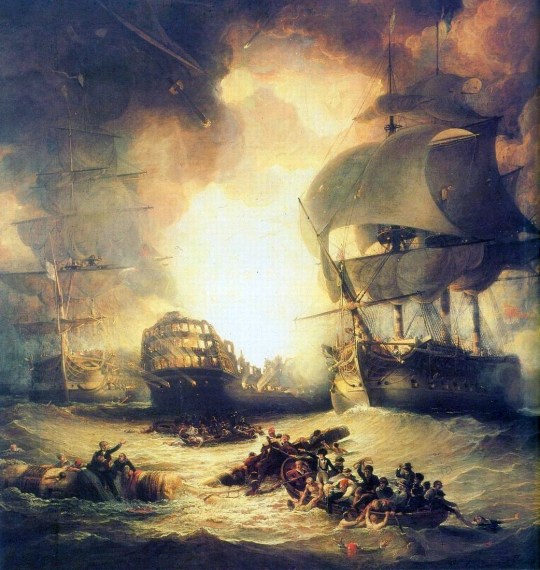
The Battle of the Nile began on this day in history, 1 August 1798. The battle, also known as the Battle of Aboukir Bay, saw the British Royal Navy under Horatio Nelson prevail over the Navy of the French Republic in a battle that concluded on 3 August. The battle was the climax of a naval campaign that had ranged across the Mediterranean during the previous three months, as a large French convoy sailed from Toulon to Alexandria carrying an expeditionary force under then General Napoleon Bonaparte. The British victory at the Battle of the Nile effectively put an end to Napoleon’s invasion of the Middle East and made Nelson a war hero in the British Empire.

89 notes
·
View notes
Photo
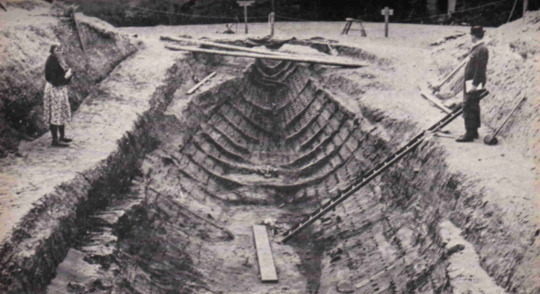
On This Day (July 27th) - In 1939 Mrs Edith Pretty, a landowner at Sutton Hoo, Suffolk, asked archaeologist Basil Brown to investigate the largest of many Anglo-Saxon burial mounds on her property. Inside, he made one of the most spectacular archaeological discoveries of all time.
433 notes
·
View notes
Text
Coronation of James I
25 July 1603

James VI of Scotland was crowned King of England and Ireland on this day in British history, 25 July 1603, becoming James I. Although the kingdoms of Scotland and England were individual sovereign states, each with its own parliament, judiciary, and law, James brought about the Union of the Crowns, a union of the states (including Ireland) under the same monarch. James would continue to sit on all three thrones until his death in 1625. England and Scotland were not brought under unified parliamentary rule until the Acts of Union of 1707, with Ireland remaining a separate kingdom that was subordinate to England until 1784.
#history#james i#coronation#king of england#monarchy#union of the crowns#british history#OnThisDay#this day in history#today in history#today in british history
108 notes
·
View notes
Text
Sir Horatio Nelson Wounded at the Battle of Santa Cruz de Tenerife
24 July 1797
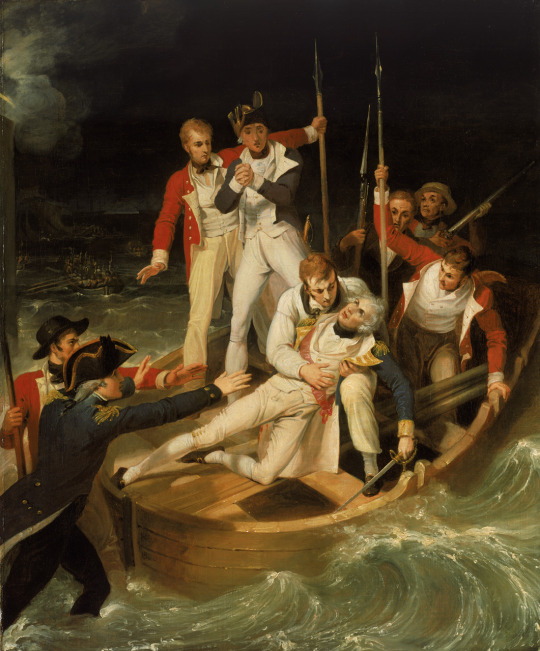
Upon hearing reports that Spanish treasure conveys frequently stopped at the port city of Santa Cruz de Tenerife in the Canary Islands, in July 1797, Admiral John Jervis dispatched a small squadron under recently promoted Rear Admiral Horatio Nelson with the aim of seizing Santa Cruz by means of an amphibious attack. When the expedition arrived in the vicinity of Santa Cruz on 17 July, it numbered 400 guns and nearly 4,000 men.
After the initial landing plans failed on 23 July, Nelson Nelson called his captains on board Theseus and explained how he himself would lead the next move ahead of a boat group followed by five more boats. On the night of 24 July 1797, Nelson led what they hoped would be a surprise amphibious landing. However, the Spanish lookout sounded the alarm when the British troops drew close to land, and the disembarking soldiers were met by a heavy barrage of cannon fire. British forces led by Captain Bowen rushed the battery covering the harbour, captured it and spiked its guns. They began to pursue the fleeing Spanish into the town, but were swept by a hail of grapeshot. Bowen, his first lieutenant and several of his men were killed, while Nelson, who was just landing from his boat, was hit in the right arm.
Nelson was bleeding copiously and his stepson, Lieutenant Nisbet, cut a piece of his own neck handkerchief and tied it tightly around Nelson’s arm to stop the bleeding. The admiral refused to use the frigate Seahorse that was stationed close by, to be taken back to his flagship, as it would imply that Captain Fremantle would have to hoist a flag of distress and thereby demoralise the crews. Instead, the sailors of his boat rowed hard back to the Theseus. The surgeon had been warned of the contingency and got his instruments ready. Nelson was cited as saying, as he pointed to his right arm “Doctor, I want to get rid of this useless piece of flesh here”. Nelson’s operation was quick and aseptic. The limb was thrown over board, despite the admiral’s wish to keep it.
In the end, having sustained heavy losses, Nelson was forced to withdraw from Tenerife and sail back to England with a demoralised force.
41 notes
·
View notes
Text
The Battle of Cape Finisterre
22 July 1805

An engagement during the Napoleonic Wars, the Battle of Cape Finisterre was fought on this day in history, 22 July 1805. The battle took place off Galicia, Spain, where the British fleet under Admiral Robert Calder fought an indecisive naval battle against the combined Franco-Spanish fleet which was returning from the West Indies. Although both sides claimed victory, Admiral Calder failed to strike the shattering blow that would have freed Great Britain from the danger of an invasion. Calder was later court-martialled and severely reprimanded for his failure on 22 July, in addition to his refusal to renew the engagement on 23 and 24 July. In the end, the French naval commander also blundered, electing not to continue on to Brest, where his fleet could have joined with other French ships to clear the English Channel for an invasion of Great Britain.
39 notes
·
View notes
Text
The Battle of Salamanca
22 July 1812

The Battle of Salamanca took place on this day in British history, 22 July 1812. An action during the Peninsular War, the battle saw an Anglo-Portuguese army under the Duke of Wellington defeat Marshal Auguste Marmont’s French forces among the hills around Arapiles, south of Salamanca, Spain. A Spanish division was also present but took no part in the battle.
#history#battle of salamanca#duke of wellington#peninsular war#British history#OnThisDay#this day in history#today in history#today in british history
33 notes
·
View notes
Text
The Battle of Falkirk
22 July 1298

The Battle of Falkirk, a major battle in the First War of Scottish Independence, took place on this day in British history, 22 July 1298. King Edward I led the British army against William Wallace and the Scots. Although the Scots had defeated the English on several previous occasions, the English held a large numerical superiority at Falkirk and easily defeated the Scots. Shortly after the battle William Wallace resigned as Guardian of Scotland.
#history#battle of falkirk#william wallace#First War of Scottish Independence#edward i#british history#OnThisDay#today in history#today in british history#this day in history
53 notes
·
View notes
Text
The British Take La Chevrette
21 July 1801

The cutting-out of the French corvette La Chevrette took place on this day in maritime history, 21 July 1801. This once famous incident occurred during the Napoleonic Wars, at a point when Britain feared a French invasion. Four British frigates were watching the enemy fleet at the entrance to Brest Harbour, Brittany. On the night of 21 July, their boats, manned by volunteers and with oars muffled, set out to board La Chevrette but the French were armed and waiting. After a fierce battle the smaller British force captured the ship, her captain was killed in one-to-one combat, and La Chevrette taken in triumph to Plymouth. The fact that the British were able to take La Chevrette is perhaps evidence of the futility of their feat. After all, how could a French fleet unable to guard its own ships in its own harbor mount a successful invasion?
The painting above is ‘The Cutting-Out of the French Corvette La Chevrette’ by Philip James de Loutherbourg. (1802).
36 notes
·
View notes
Text
The Battle of Shrewsbury
21 July 1403

It was on this day in British history, 21 July 1403, that King Henry IV prevailed at the Battle of Shrewsbury. The Lancastrian army defeated rebel forces led by Henry “Hotspur” Percy of Northumberland. It was the first time that English archers fought one another on English soil, and is seen as a demonstration of the deadly effectiveness of the English longbow.
#history#shrewsbury#Battle of Shrewsbury#henry IV#Longbow#OnThisDay#this day in history#today in history#today in british history
68 notes
·
View notes
Text
Edward I Besieges Stirling Castle
20 July 1304

It was on this day in British history, 20 July 1304, that Stirling Castle surrendered to end the siege that had been brought by King Edward I. The 1304 siege is famous for Edward’s use of siege engines and catapults to bombard the castle for several months. The most famous weapon was called Warwolf, and it is possible that Warwolf was the largest trebuchet ever constructed.
#history#stirling castle#siege#edward i#British history#OnThisDay#this day in history#today in history#today in british history
77 notes
·
View notes
Text
Sinking of the Mary Rose
19 July 1545

The Mary Rose, the pride of King Henry VIII’s naval fleet, sank in the Solent while leading an attack on the galleys of a French invasion fleet on this day in history, 19 July 1545. The sunken ship was discovered in 1971 and a salvage operation began in 1982. It is currently in the final stages of conservation and a magnificent museum exists at the Portsmouth Historic Dockyard to showcase the warship’s remains.
121 notes
·
View notes
Text
Sinking of RMS Carpathia
17 July 1918
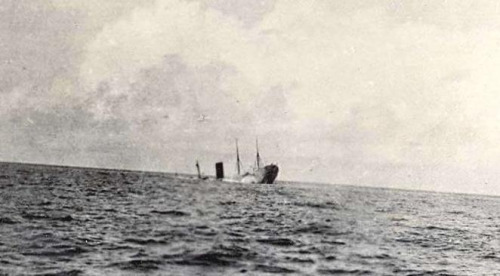
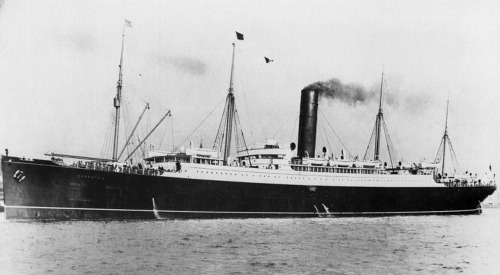
RMS Carpathia sank off the coast of Ireland after being torpedoed by a German U-boat on this day in history, 17 July 1918. Carpathia made her maiden voyage in 1903 and became famous for rescuing the survivors of RMS Titanic after it struck an iceberg and sank in April 1912. Carpathia was used during World War I to transport American and Canadian troops across the Atlantic.
On the summer morning of 17 July 1918 she was torpedoed in the Celtic Sea by the Imperial German Navy U-boat, U-55. Of three torpedoes fired at the ship, one impacted the port side while another penetrated the engine room, killing two firemen and three trimmers. All 57 passengers and 218 surviving crew members boarded lifeboats as the vessel sank. U-55 surfaced and fired a third torpedo into the ship and was approaching the lifeboats when the Azalea-class sloop HMS Snowdrop arrived on the scene and drove away the U-boat with gunfire before picking up the survivors from Carpathia.
87 notes
·
View notes
Text
Coronation of Richard II
16 July 1377

Today marks the anniversary of the coronation of King Richard II. He was crowned at the age of 10, on this day in British history, 16 July 1377. Richard would remain king until being deposed by Henry of Bolingbroke in 1399.
#history#richard ii#british history#coronation#monarch#OnThisDay#this day in history#today in history#today in british history
207 notes
·
View notes
Text
Jerusalem Falls During the First Crusade
15 July 1099

It was on this day in history, 15 July 1099, that the Crusaders completed their siege of Jerusalem during the First Crusade. English soldiers played a very small role in the Crusade, with Robert Curthose, Duke of Normandy, providing the strongest English tie to the First Crusade. The Siege of Jerusalem ended in a massacre of the city’s inhabitants, a historical black mark on the crusade and its participants. Historians have highlighted several motivating factors behind the Crusades including religious rhetoric, racial animus, and the church’s desire to expand its economic control.
#history#first crusade#jerusalem#siege of jerusalem#OnThisDay#this day in history#today in history#today in british history
65 notes
·
View notes
Text
Napoleon Given Asylum Aboard HMS Bellerophon
15 July 1815
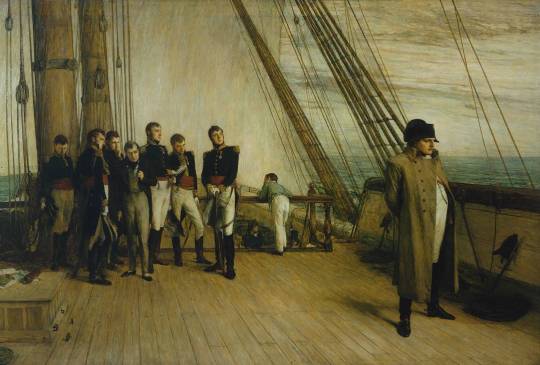
Six weeks after his defeat at Waterloo, Napoleon boarded HMS Bellerophon and formally demanded political asylum, on this day in British history, 15 July 1815. It was HMS Bellerophon that would transport Napoleon to his exile on the island of St. Helena.
48 notes
·
View notes
Text
The Battle of Britain Begins
10 July 1940

The initial phase of the Battle of Britain began on this day in British history, 10 July 1940. The early stages of the battle took place over the English Channel in what the Germans called the “Kanalkampf.” These early engagements saw German fighters and bombers test the RAF defenses and the Luftwaffe often prevailed in the Kanalkampf.
#history#wwII#battle of britain#British history#OnThisDay#this day in history#today in history#today in british history
127 notes
·
View notes